Contents
The Crimean truffle is common on the coast of the peninsula in wooded areas. A fungus from the Truffle family is classified under the scientific name Tuber aestivum.
The Crimean species is also known by other definitions: edible, black, earthen or black heart. To add value to the product, mushrooms are sometimes called burgundy, although they are different types.
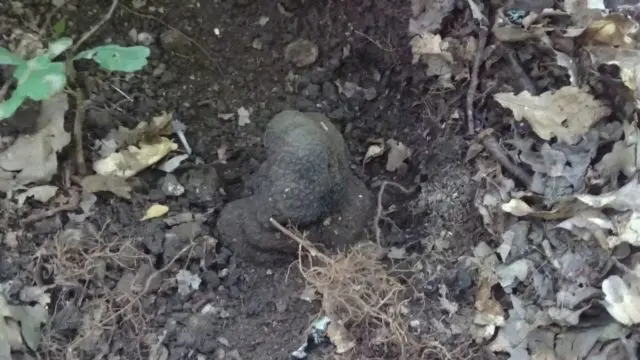
The Crimean truffle is often found in the thickets of young oak forests.
Do truffle mushrooms grow in Crimea
On the Black Sea coast, including in the Crimea, black summer representatives, or the so-called black s, are quite common, according to mushroom pickers who specialize in searching for and collecting expensive underground prey. They are found in forests and plantations where broad-leaved species grow – oaks, beeches, hornbeams. The Crimean species is also sometimes found in coniferous plantations. One of the well-known mycologists of our time refutes unconfirmed allegations that the winter black species also grows in the Crimea, since there were no known cases of finding these mushrooms.
Summer black truffle on the Crimean coast begins to look from May until December.
What does the mushroom Crimean truffle look like
Fruiting bodies of Crimean summer truffles are found at a depth of up to 3-12 cm, in some places much deeper. Mature mushrooms sometimes come to the surface.
The black summer species is from 2 to 11 cm in size. The fruiting bodies of the Crimean truffles, as in the photo, are irregular in shape, tuberous or rounded. The skin is black-blue, may be with a brown tint, warty. Large tubercles on the skin of a pyramidal shape.
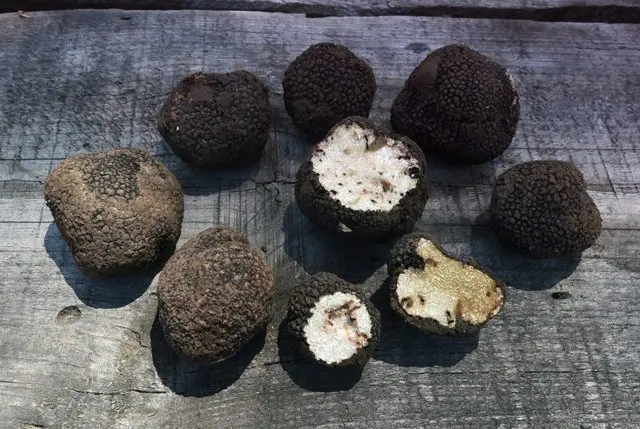
The pulp of the black truffle is light
At a young age, the flesh is yellow-white or grayish-yellow, then gradually turns brown, the yellow color becomes darker. On the cut, light beige veins are visible, which are compared with a natural marble pattern. The pulp of the Crimean species is dense, juicy, then becomes loose. The smell is pleasant, strong enough.
Some experts believe that the fungus smells like algae or fallen leaves. The taste of sweetish pulp is compared with a walnut.
The mass of spores of the Crimean underground fungi is yellow-brown.
Where does truffle grow in Crimea
The Crimean species of recognized delicacy mushrooms creates mycorrhiza with broad-leaved or other trees, less often with pines. Usually fruiting bodies of the summer variety are found in places where hornbeam, beech, oak or birch grow. On the Crimean coast they are also searched for near pines. Often specialist mushroom pickers return from a successful quiet hunt in the undergrowth, consisting of young beeches or oaks. Usually ripe mushrooms are found from the last days of July until the beginning of December.
How to find a truffle in Crimea
The summer species is black, or Crimean, prefers to grow on soils with a high content of lime. It is found at a depth of 3 to 14 16 cm. Although sometimes the depth of occurrence reaches 25-29 cm. It is believed that on the Crimean Peninsula these mushrooms cannot be found in the central steppe or mountain region, but only on the coast and in the foothills. Especially successful is the search for truffles in the Kirov region, as well as in the famous Baidarskaya Valley in the vicinity of Sevastopol.
Is it possible to eat Crimean truffles
The Crimean edible truffle, or black, looks a bit like the famous Perigord black, shown in the photo:
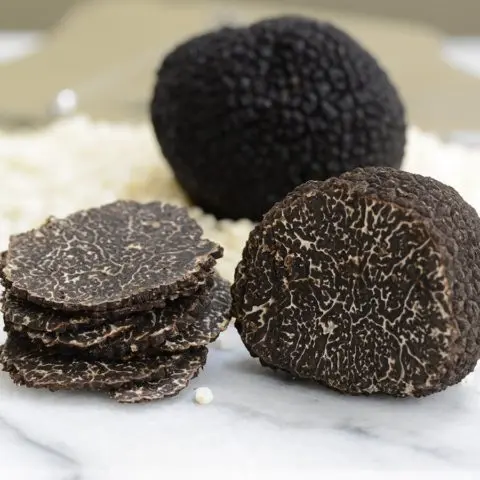
Both species have fruiting bodies of the same dark color with pyramidal tubercles. But the difference begins after the mushroom is cut: the marble pattern is completely different. Winter French truffles have brown flesh to black and purple. The veins are black and white, with a red border. The summer Crimean species is distinguished by yellowish-brown flesh with white streaks. Also, fungi have different microscopic indicators.
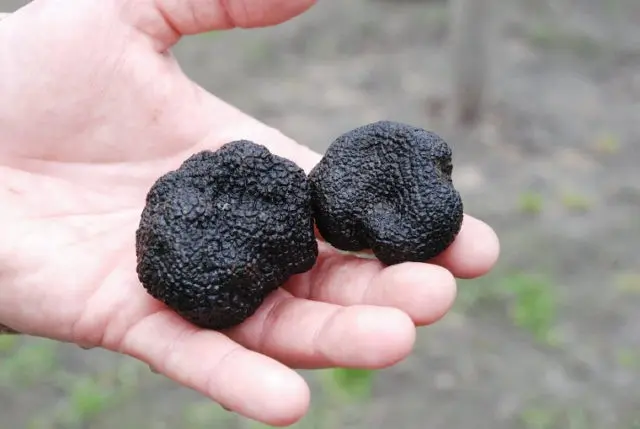
Winter black truffle
The Crimean truffle is edible, but does not have the same smell as the Western European species. The taste correlates with a nutty note. Professionals believe that the consistency of the Crimean mushrooms is coarser, and the smell is much inferior in composition to the French distant relative.
Rumor has it that initially the Crimean truffles were highly valued, but after the restaurateurs learned about their true taste, the price dropped somewhat. Some trendy chefs believe that the Crimean look is only suitable as a decoration on dishes.
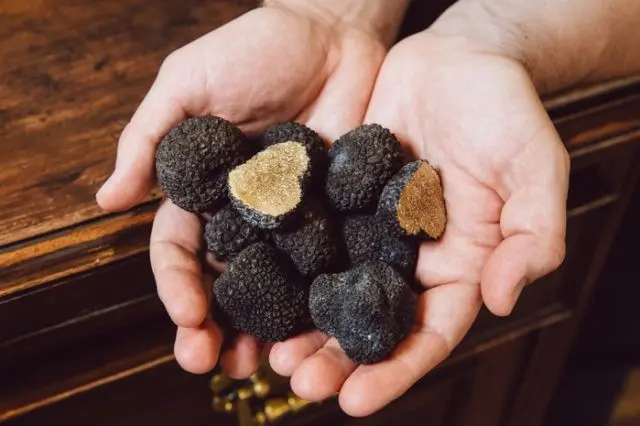
In summer, underground mushrooms are small
Rules for collection and use
Although underground mushrooms are harvested on the Crimean peninsula, such activities may well be classified as illegal, since the species is included in protected natural objects and is listed as protected in the Red Book of Our Country and Crimea. Mushroom pickers coordinate their actions with the relevant structures; it is impossible to collect fruiting bodies in protected areas.
A new business is being popularized – the cultivation of mushroom delicacies by planting bushes and trees with ready-made truffle mycorrhiza on the roots. In such places, signs of ripening fruiting bodies:
- ashy soil;
- midge swarming in one place low above the ground;
- potholes in the ground made by animals.
The mushroom delicacy retains its properties fresh, as it is used:
- fruit bodies are cut with a slicer directly into a plate near the dining table;
- delicacy is added to dishes prepared from products with an inexpressive smell.
Conclusion
The Crimean truffle is edible, like all fruiting bodies of the summer species. It differs from Western European delicacies in a less intense smell, taste, and a different pulp consistency. It is listed in the Red Book as a rare variety, so an uncoordinated collection is in conflict with the law.









